Marcoule: Orano an integral part of the world’s largest nuclear dismantling project

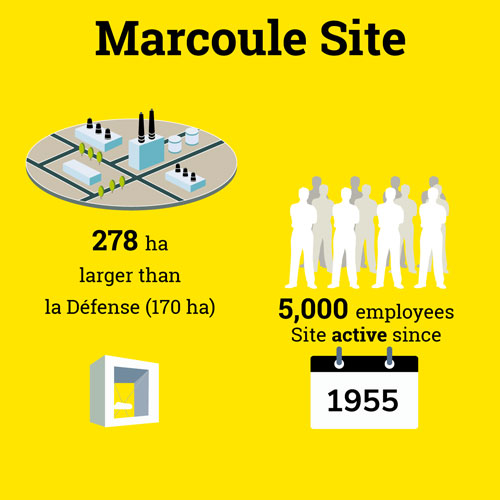
With competition stiffening in the growth market of dismantling, Orano is, more than ever, emerging as a leading player in this segment. A specialist in both nuclear construction and nuclear deconstruction, it is in the forefront of work orchestrated by the Commissariat à l’Énergie Atomique et aux Énergies Alternatives (CEA) at the Marcoule site. Orano has been active in this project since industrial operations began in 2006, and it renewed its industrial partnership with the CEA at the end of 2015. The newly signed contract for the 2016-2020 period, valued at 370 million euros, secures Orano’s historical presence at the Marcoule site.
Part 1 : The cradle of nuclear energy in France
In France, nuclear energy was developed largely at Marcoule. The French government chose this site in 1955 to build the nuclear reactors used to produce plutonium for the atomic bomb as well as the first plutonium recycling plant. It is also here that the CEA developed the graphite gas reactor technology used in the first generation of French nuclear reactors. And it is at the Marcoule site that the second fast neutron reactor, Phénix, was built in 1973 and operated until 2010. Today, most of these facilities are shut down, but they continue to play a crucial role in the future of nuclear power.
That’s because, over time, Marcoule has become a veritable dismantling laboratory. The highly complex operations in progress constantly call for the invention of new processes and technologies that will simplify the dismantling of all types of nuclear facilities in the future.
“ Our continued collaboration with the CEA at Marcoule is a solid foundation for developing our dismantling know-how. The CEA center at Marcoule is currently hosting some of the world’s most important dismantling projects – in which Orano will continue to be fully involved – and represents a melting pot for innovation in this segment. “
Alain Vandercruyssen, Director of Orano Dismantling and Services
Part 2 : Riana, born in Marcoule
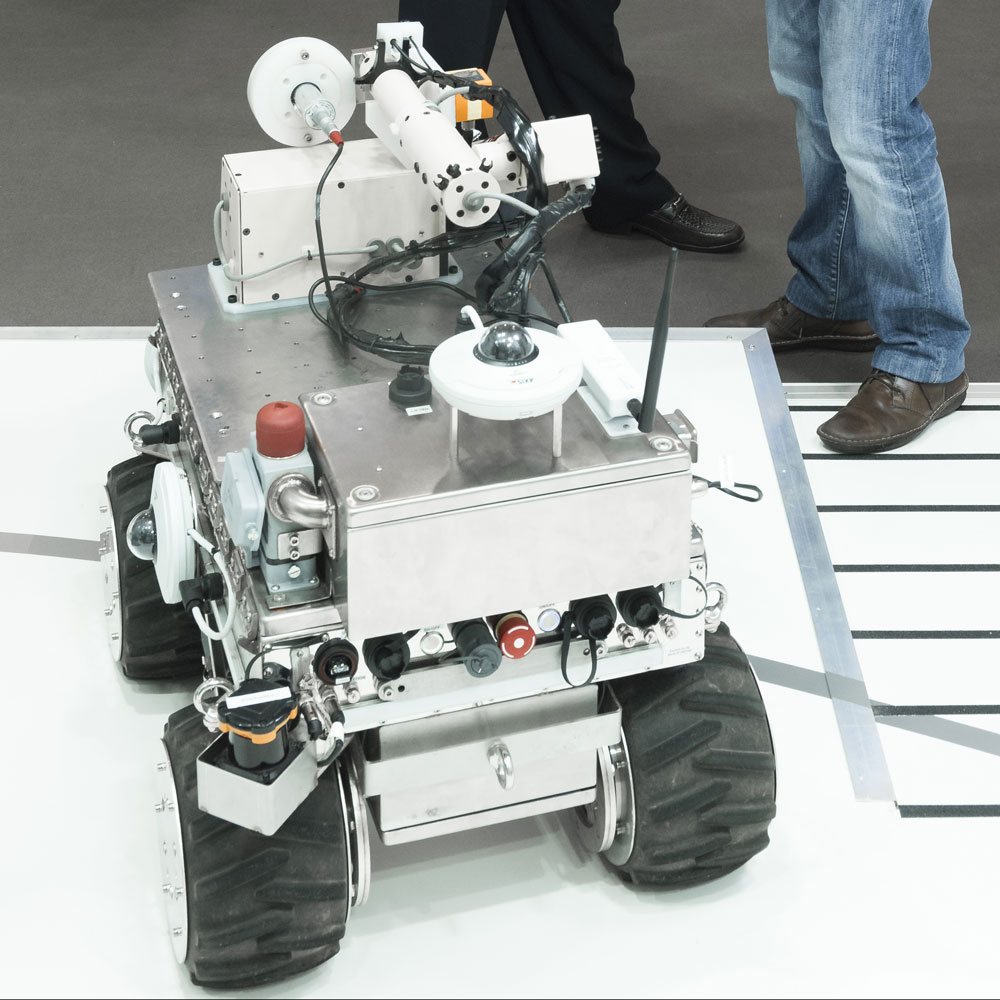
“ RIANA is a motor-driven platform that can easily accommodate different modules, depending on the work required. This ability to adapt limits the amount of time operators are present in radioactive areas and allows the site to be mapped more precisely, all of which leads to optimization of dismantling operations. ”
Daniel Kanaan, Project Manager at Orano
Part 3: Orano at Marcoule
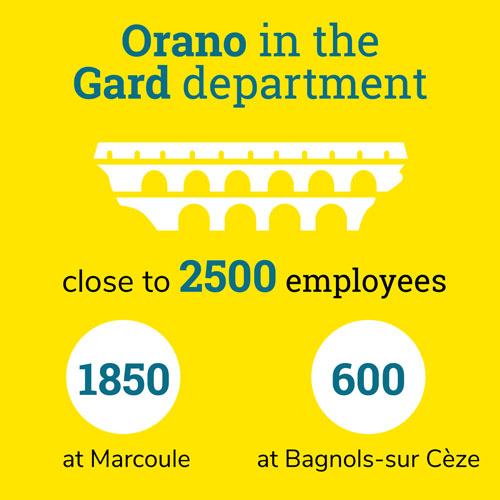
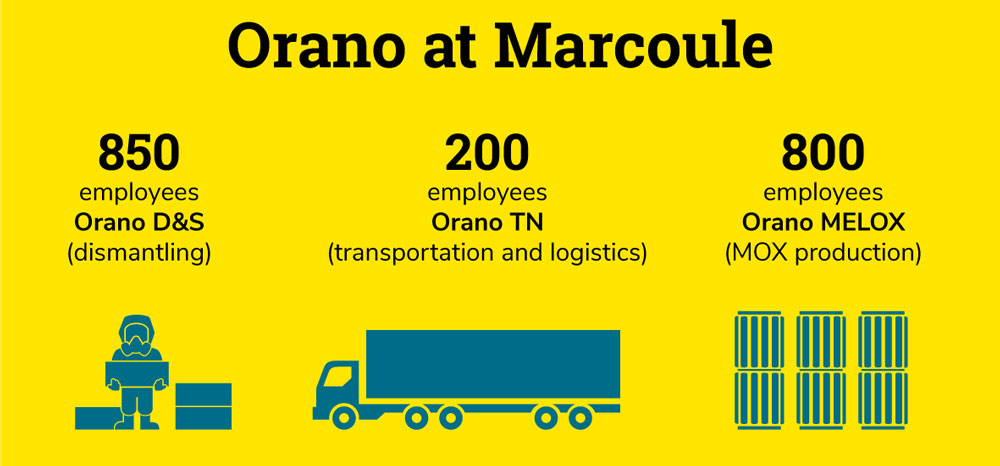
Marcoule step by step
Orano teams work at several of the site’s facilities, both for dismantling and services, including radiological surveillance and project and safety coordination for the CEA, and as an operator of plants and sites placed under the group’s direct authority.
All about the dismantling of nuclear installations
What is dismantling?
It is a strictly regulated process aimed at deconstructing equipment and/or buildings that have been used for the conduct of operations in the nuclear industry (fuel fabrication, electricity production, research activities involving radioactive products , etc.). Nuclear dismantling activities start with the decontamination of a zone or a unit, which is then extended to a building and eventually the facility as a whole, before moving on to carry out the complete deconstruction process.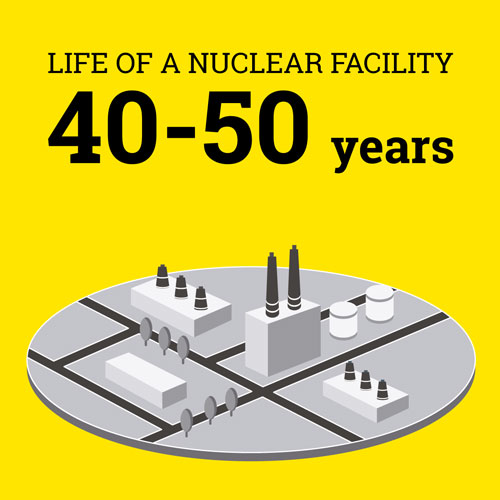

5 major steps
Nuclear facility decommissioning is structured in five phases, which can be spread over periods ranging from 5 to 40 years, depending on the nature and extent of the facility. In France, at the end of each phase, the Nuclear Safety Authority (ASN) must give its approval before proceeding to the next stage.Step 1: Shutdown of the installations
The first phase is the cessation of industrial activities on the site. The functioning of a nuclear facility cannot be stopped at the touch of a button, and a certain amount of time may elapse between declaring the cessation of operations and the final shutdown proper.
Step 2: Evaluation of resources and methodology
The next step is to write down and map out the complete decommissioning scenario. How to carry out the dismantling work? What are the priorities? In what timeframe? With what human and financial resources? After getting the ASN’s approval, the plan can be deployed. Remark: as of today, for all French nuclear facilities, the decommissioning plan is built in from the design stage of the plant, reactor, workshop, etc.
Step 3: Removal of sources of radioactivity
At all nuclear sites, the majority of the radioactivity comes from the material handled (99.9%). In a power plant, this means the fuel used to produce electricity. In a fabrication plant, it is the uranium and plutonium used to make the fuels to be used in the power plants. By removing the radioactive sources from the site, the ambient radioactivity is greatly reduced, which makes it possible to move on to the longest and most complex phase of dismantling.
The task now is to remove all the elements presenting radioactivity, piece by piece. Applying the most drastic safety measures, production equipment and all ancillary parts such as pipework are cut up and removed. Once the building is emptied of its equipment, it is time to decontaminate the concrete using “scarification” techniques. All of these activities generate waste, and this is managed in collaboration with ANDRA (the French National Agency for Radioactive Waste Management), who are responsible for the waste storage and management processes. This is the longest and most complex decommissioning phase, and it is carried out under strict working conditions (ventilated suits, permanent radiation monitoring, construction of protective airlocks, etc). The work may be scheduled over several years, and sometimes over several decades.
Step 5: Monitoring and delicensing of the site
Once the buildings have been emptied and the inspections no longer reveal any abnormal traces of radioactivity, the ASN can take the decision to delicense the facility. It is now ready to host a new industrial activity or project.
Questions about dismantling and decommissioning
Is dismantling only an issue for nuclear power plants?
No, far from it! In France, some 30 facilities are undergoing or awaiting dismantling and decommissioning following their
final shutdown, including 9 nuclear reactors. The majority of the dismantling projects underway involve workshops and plants belonging to the nuclear fuel fabrication cycle and research facilities.
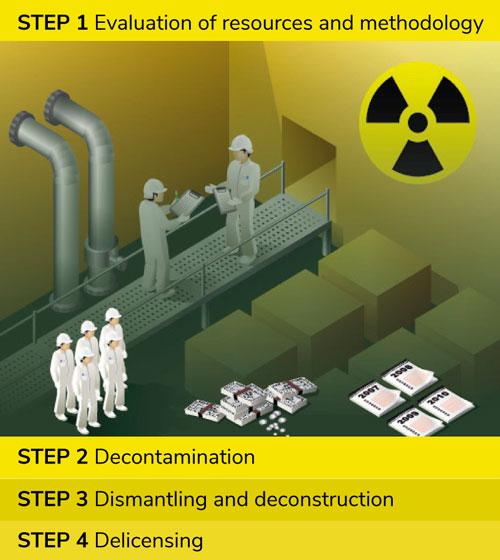
At the end of the dismantling-decommissioning
process, are we back to a green-field site situation?
Most of
the facilities being dismantled at the moment are located on sites that
have other facilities still in operation. Buildings decontaminated in
the course of a decommissioning project
could certainly accommodate a new industrial activity in the future,
rather than being demolished.
No more than to build it in the first place: it is a matter of being methodical and having the special know-how required. Decommissioning involves removing all the radioactive elements and nuclear equipment from a site. In a nuclear power plant, 99.9% of the radioactivity comes from the fuel, which is designed to be removed once it has been used. The main difficulty is related to the size of certain components, such as the steam generators that are 14 meters high and weigh 110 tons! The dismantling of a fuel cycle installation on the other hand presents different but equally complex problems, associated with the number of production units in which radioactive elements have been handled daily often over many years.
Do we have to consider the dismantling-decommissioning costs to be a financial “black hole”?
In France, funding for the decommissioning of a nuclear facility is planned in from the outset and then revised on a regular basis. For example, for a power plant, it is factored into the production cost of the electricity. It has been estimated that a doubling of decommissioning costs compared to initial estimates would only affect the cost of nuclear electricity by 5%. Today, the French nuclear operators (CEA, EDF, Orano) have provisioned over € 30 billion to meet their decommissioning commitments.
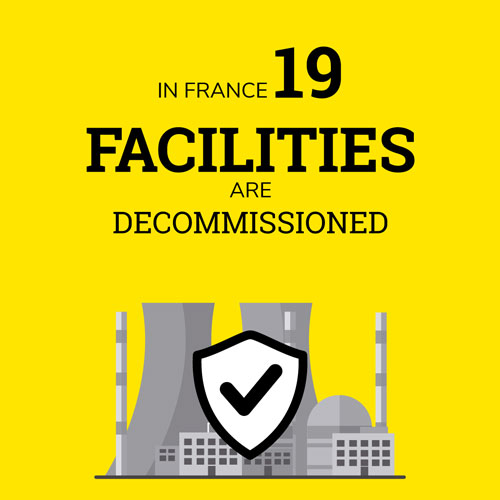

Permanent innovation
The decommissioning of nuclear facilities is a constantly evolving activity. Most of the worksites to date involve facilities that are either experimental or date from the early days of civil nuclear power. They therefore all present unique problems and require original solutions. Every worksite is an opportunity to imagine, develop and test new processes or new machines, which will be at the heart of tomorrow’s dismantling techniques.Pacman
Pacman is not only the name of a video game. It is also the name given to an ingenious process designed by Orano to devour old sections of piping that have been used to circulate nuclear materials. Pacman is a kind of mobile enclosure that moves along, “eating up” sections of piping - in fact cutting up pipework ranging from 2 to 7 cm in diameter as it goes.
Charli and Eloïse
Charli has the tough job of supporting us with cutting operations carried out on the internals of nuclear reactors using sodium. Special features - Charli is able to perform laser cutting operations directly inside the reactor
vessel. With his special arm equipped with a laser cutting head and an array of cameras, Charli is a super agile robot, at home in the most confined of spaces. This is a robot who knows no fear and will happily work in irradiated environments and at high
temperatures.
